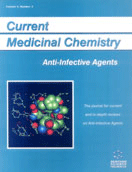Abstract
Investigations into natural products from marine organisms have generated an enormous database of antibiotics of diverse chemical structures. Marine natural products almost certainly play key roles in the health of the host organism, and contribute to the dynamics of microbial communities within reef-dwelling organisms, but they have also provided a valuable library for screening for antifungal compounds effective against pathogens from the genera Candida, Aspergillus and Cryptococcus among others. This review covers antifungal compounds from marine invertebrates. The intention is to convey to the reader the ‘lay of the land’ with respect to structural chemotypes produced by marine organisms from the IndoPacific and Atlantic oceans that are most frequently encountered during cell-based screening programs for antifungal compounds. The sections cover marine macrolides, aminoalcohols and related heterocyclic structures, including oxazoles and other alkaloids, peptides as well as a few representative terpenoids and polyketides. Knowledge gained from the investigations of marine antifungal compounds may find use in directed synthesis of useful analogs and the further development of leads for the discovery of novel targets for intervention in fungal antibiosis.
Keywords: antifungal, marine organisms, antibiotics, cryptococcus, marine invertebrates, marine macrolides, aminoalcohols
 7
7

